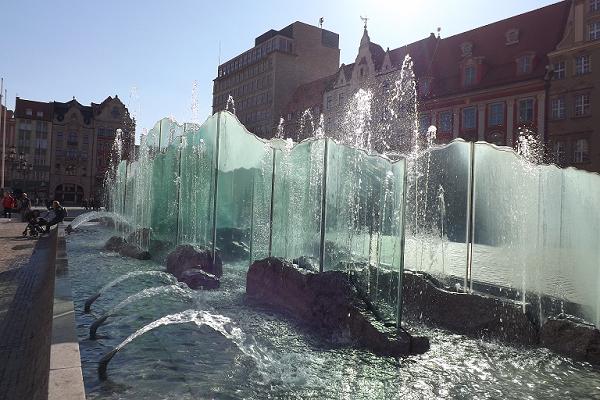The second post of my Travel Return Booty will present the places I visited in Poland.
(St.Mary's Basilica in the background)
It was Palm Sunday in Kraków, an important day for Catholics in Poland, and the weather was fine to boot, so the town was rather crowded, not only with - mostly Polish - tourists, but with pretty much all inhabitants of the city and surroundings. The women and some children were carrying bouquets made of evergreen and spring flowers. It was a pretty sight.
Since there were services and prayers going on all day, I didn't have a chance to seen any of the churches from the inside, but I didn't mind - I got plenty of church photos in my collection. There was much else to see, after all.
Like the remains of the town fortifications, the Barbakan and St.Florian's Gate. Not many people purchased a ticket for the tour of their interior, so I had some quiet moments doing one of my favourite things: photographing Mediaeval military architechture. *grin*
Wawel Castle had been the main seat of the Kings of Poland for centuries and thus has been altered and enlarged several times. The inner yards are open to the public, but access to the rooms is limited to 30 people per hour, so it is a bit tricky to get tickets for the tour (though I approve such precautions to preserve valuable items). Since photographing is not allowed inside, I skipped the Flemish tapestries and pretty furniture.
Outside I met with a fire breathing dragon. The beastie haunted a cave under the castle until a shoemaker - a poor one, of course - fed it with a lamb skin full of sulphur and the dragon exploded, whereof the shoemaker married the princess. Though he never appears in the geneaolgies of the Piasts and Jagiellons. The statue dates to 1972 and does indeed breathe fire now and then. I was lucky to catch on of those bursts (though you can obviously trigger them via SMS, how mundane).
Kazimierz, the former Jewish Quarter, is a very different part of Kraków. Less frequented by tourists, but popular with young people. Some houses have already been restored and look as pretty as in the Old Town, but others still need new paint or a sandblasting. It gives the place a slightly rundown, but charming atmosphere.
I also got yet another castle for my collection. There are several castles not far from Kraków; the so called Eagle Nest Trail, a series of castles situated on lime stone cliffs. They were built mostly in the 14th century to protect the border to Silesia which then belonged to the Kingdom of Bohemia. Ogrodzieniec is the most spectacular of the lot.
The castle is a veritable labyrinth since the various levels have been made accessible by stairs and metal bridges. I didn't even notice the school class who visited the place at the same time until we met back at the entrance.
Wrocław (Breslau) was much quieter and relaxed; a nice final part of my tour. The market square (rynek głowny) is one of the finest in Europe. I've seen some pretty ones, esp. the one in Bruges, but I like the market square in Wrocław best.
Even the modern well, the Zdroj Fountain from 1996, which sparkles so prettily in the sunshine, fits. And for one there was no need to photgraph around tourists and Easter market booths. *grin*
The second historical centre of Wrocław is the Cathedral Island (Ostrów Tumski) in the Oder river. It is the eldest kernel of the town, dating to the 10th century. The island was given to the Church in 1315. The most famous - and architecturally outstanding - building on the island is the Gothic Cathedral of St. John the Baptist.
The Botanical Garden is also situated on the Cathedral Island. It was a lovely, quiet and restful place filled with the flowers and scents of spring.












No comments:
Post a Comment
Blogger / Google may temporarily store the data by commenters, including the IP address.